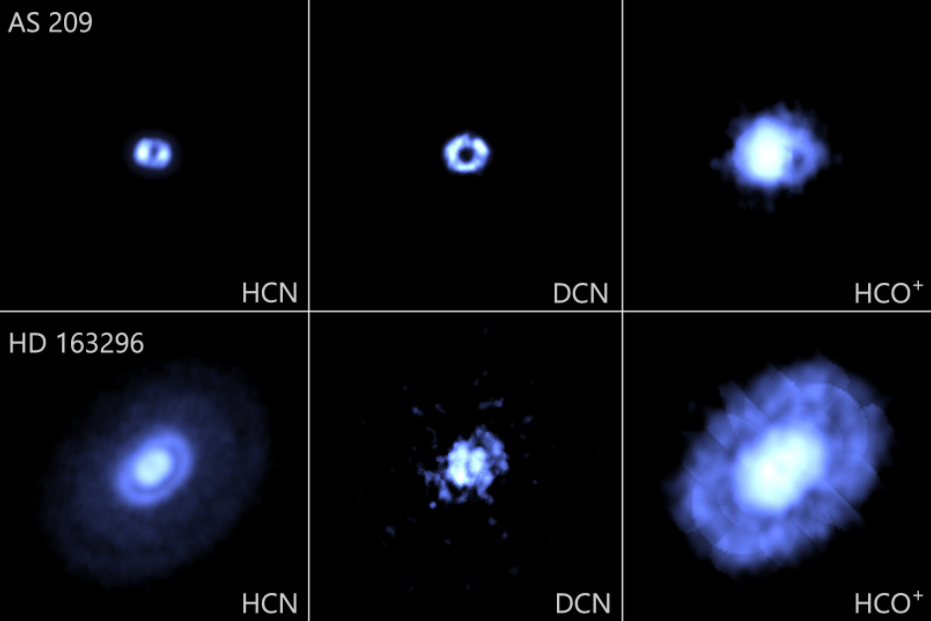Scientists used the ALMA radio telescope complex to create «maps» molecular composition
Protoplanetary disks are high-density gas and dust clouds that orbit a young star. They contain the remnants of protoplanetary matter, from which planets are subsequently formed.
 Images of protoplanetary disks around youngstars AS 209 and HD 163296 using ALMA. Different molecules have different distributions. Credit: ALMA (ESO / NAOJ / NRAO), Cataldi et al / Aikawa et al.
Images of protoplanetary disks around youngstars AS 209 and HD 163296 using ALMA. Different molecules have different distributions. Credit: ALMA (ESO / NAOJ / NRAO), Cataldi et al / Aikawa et al.
The chemical composition of the disc affects howplanets are formed and whether life can exist on them. In their work, scientists examined protoplanetary disks around five young stars - IM Lup, GM Aur, AS 209, HD 163296 and MWC 480.
“With the help of ALMA, we saw howThe molecules are distributed where exoplanets are now gathering, explains Karin Oberg, an astronomer at the Center for Astrophysics at the Harvard and Smithsonian Institutions. “It turns out that the planet-forming disks around five young stars are “factories” of a special class of organic molecules—nitriles—that are involved in the origin of life here on Earth.”
Around all five stars, scientists also foundmolecules HCN (hydrocyanic acid), C2H (ethynyl radical) and H2CO (formaldehyde). Basically, these substances were found in the inner regions of the disks, where rocky planets gather. Scientists also observed more complex organic molecules - HC3N (cyanoacetylene), CH3CN (acetonitrile) and c-C3H2 (cyclopropenylidene).
Although these molecules have been found in protoplanetarydiscs before, the new work is the first systematic study of multiple discs with very high spatial resolution and sensitivity. In addition, scientists have not found so many different molecules before.
“It looks like our solar system is not toounique. Other planetary systems have enough basic ingredients around other stars to form the building blocks of life, ”concludes Viviana V. Guzman, an astronomer at the Institute of Astrophysics in Chile and co-author of the study.
To read Further
A unique boat turns into a submarine in two minutes and is invisible to the enemy
Physicists have cooled atoms to the lowest temperature in the world
The most detailed model of the Universe has been published online. Anyone can study it